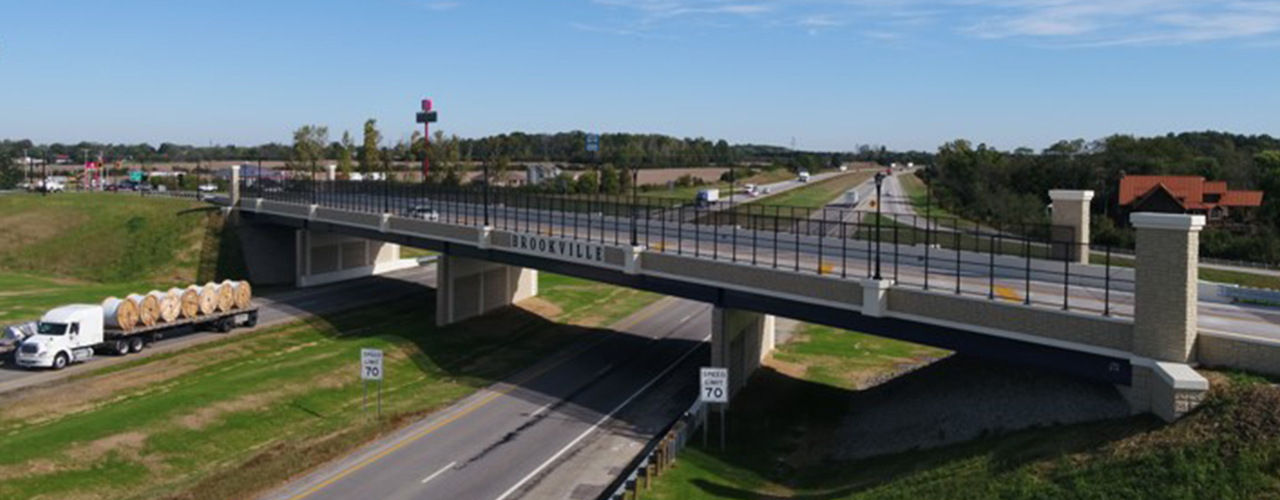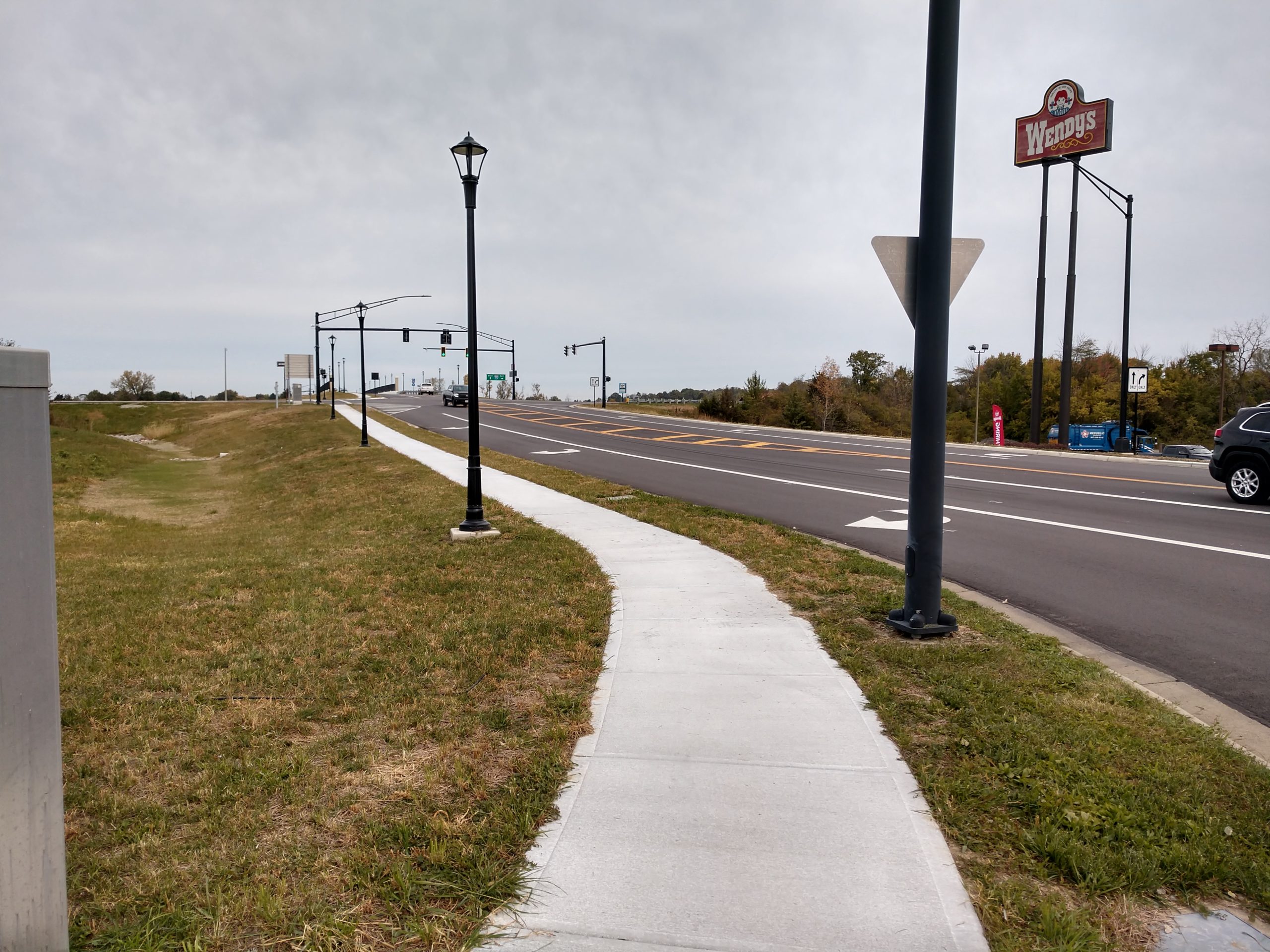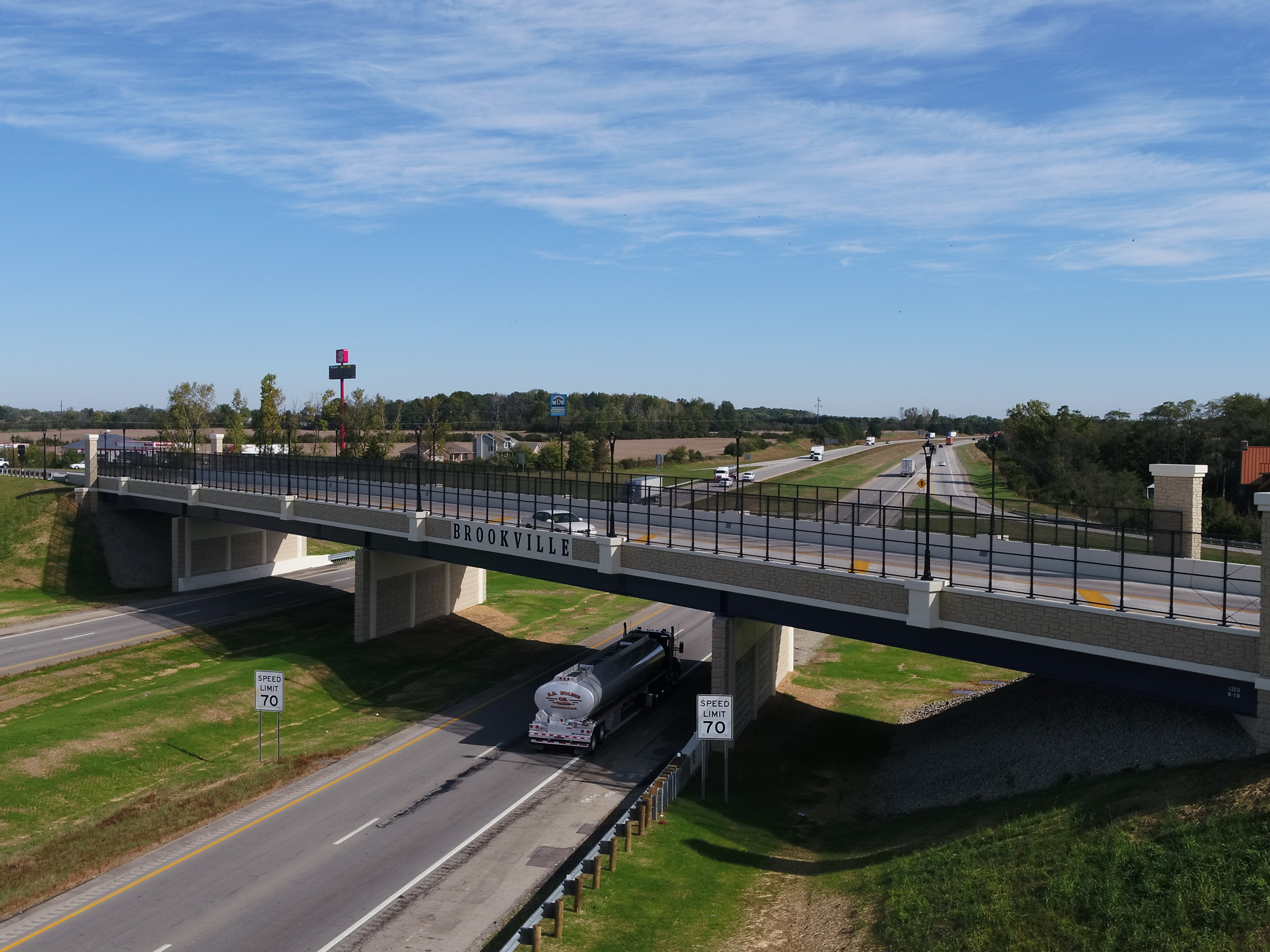MOT-70 Arlington Road Bridge

Background
The Ohio Department of Transportation (ODOT) District 7 had a need for rehabilitation of the Arlington Pike Bridge on CR-9 over IR-70, with bridge and roadway widening to accommodate a center-turn lane and new sidewalk, as well as improved vertical clearance over IR-70. ODOT posted this project through their programmatic process for design consultants to respond with letters of interest addressing the specific needs of this endeavor. Woolpert spoke with the District before the project was posted and received insights regarding what the client wanted to see for addressing the scope and needs of the project. We were alerted to the fact that this would be a high-profile project since it is the “front door” for the City of Brookville.
Challenge
This bridge was highly skewed, complicating the redesign and reconstruction efforts. This required an advanced analysis to develop details that would account for skew, fit up, and flexibility in the field. In addition, the existing bridge was not in compliance with either state or federal vertical clearance standards. Maintenance of traffic had to be sequenced to reduce the bridge closure and the associated detour period, given this interchange was critical for access to the City and local businesses. Coordination of the aesthetic details occurred with multiple stakeholders—the City of Brookville, the City’s own planning consultant, and the District—to account for everyone’s interests, with an eye on maintaining the construction budget.
Solution
Instead of the more complicated and costly decision to raise the Arlington Road profile to gain the additional clearance, the Woolpert team designed more shallow beams, resulting in a thinner superstructure over the IR-70 roadway surface to increase the clearance. Woolpert developed maintenance of traffic plans for part-width roadway widening and a detour for bridge replacement. Design features included substructure widening and replacement, street lighting, traffic signals, and ITS CCTV camera.
Woolpert evaluated and assessed a number of bridge alternatives for cost and construction detour duration constraints using full quantity take-offs. The preferred alternative included new rolled beams (W44’s), pier reinforcement by wall infill between existing columns, and a semi-integral abutment. This alternative minimized the closure time of the bridge during construction, taking approximately 3.5 months, as compared with the goal of five months. Vertical clearance was increased to 16 feet, 8½ inches as a result of using the W44’s for this 4 span (77-ft, 2 @ 109-ft, 77-ft) structure.
Discussions of aesthetics and costs associated with additional bridge width were provided for consideration by the District and locals. During the study, it was found that moving the sidewalk to the west side of Arlington Road could offer significant benefits and prevent the need for right of way, retaining walls, or an additional pedestrian crossing for the fairgrounds.
Woolpert provided a topographic survey utilizing cutting-edge mobile mapping systems (MMS) to acquire a lidar point cloud and merged it with traditional survey efforts.
Outcome
Woolpert ultimately provided plans for a superstructure replacement, substructure rehabilitation, aesthetic improvements, lighting, signal improvement, roadway design, and maintenance of traffic plans for the Arlington Road Bridge on CR-9 over IR-70 and 2,000 feet of associated road widening. Woolpert’s AER received a 92% interim ODOT Consultant Evaluation Score (CES). Woolpert collaborated with the District, the City of Brookville, and their consultant on aesthetic options, including colors, decorative lighting, formliner at the parapets and piers, pylons at the four corners of the bridge, and the addition of the City name above IR-70. The new sidewalk runs to the logical termini north to East Campus Boulevard and south to Triggs Road, connecting the City in the south across IR-70 to their developed properties to the north.


Benefits
The Woolpert team took the unusual step of creating a sample construction schedule to chart project progress and minimize the bridge closure. As a result, the construction and closure of the bridge was completed in 3.5 months instead of a more typical nine- to 12-month construction timeframe. This was achieved through innovative construction sequencing solutions and considering constructability for each component.
The project bid at $5,300,000, 3% under ODOT’s $5.5 million estimate, and finished at $5,470,000, including client added features, with just 0.6% in preventable design change orders, which were well below the State’s 2% goal. This project won the 2020 Ohio ABCD Rehabilitated Short Span Bridge Award and both the ODOT/OCA and IPI Partnering Awards in 2019.
Client
Ohio Department of Transportation (ODOT), District 7
Location
Brookville, OH
Services
- Bridge design
- Road design
- Traffic signal design
- Street lighting design
- Design-grade survey